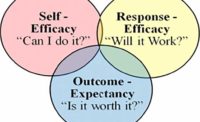Most behavior-based safety (BBS) processes start with employees defining critical safe and at-risk behaviors on their job. They use these behavioral definitions to develop an observation checklist to use during one-on-one observations of each other's work practices. Following an observation, the checklist is used to give the observee behavioral feedback, which often includes a discussion of environmental factors that influenced the safe and at-risk behaviors observed.
A percent-safe statistic is calculated from each completed checklist, and averaged to obtain mean percent-safe scores for a particular work team, behavioral category, or work culture. The checklist results are entered into a computer program to obtain ongoing percentages of safe behavior as a function of various factors (e.g., from the nature of the job and work team to certain environmental or management-system factors). So, where is the relevance for humanism in this BBS scenario?
The COACH Acronym
When I first used the term BBS in 1979, I taught the observation-feedback process with the COACH acronym: "C" for Care; "O" for Observe; "A" for Analyze; "C" for Communicate, and "H" for Help.
It starts with Caring -- a humanistic concept. “Know I Care and you’ll care what I know. I care enough to Observe you and record occurrences of safe and at-risk behavior.” Beside recording observations of safe and at-risk behaviors, the observer notes environmental factors that could be influencing the observed behavior, from antecedent conditions to behavioral consequences. This is the Analysis phase of coaching.
Next, we have interpersonal Communication – the delivery of information gained from the prior Observation and Analysis steps. Like humanistic therapy developed by Carl Rogers in 1942, the focus of this communication is on the perceptions and feelings of the individual being coached. Behavioral and environmental conditions are observed from this person’s perspective, and feedback communication is supportive and nondirective. Feedback is not delivered to direct behavior change, but to empower personal acceptance and self-accountability for designated behavioral improvement.
Rather than telling the observee what s/he should have done, the observer shows the checklist results, and after acknowledging the occurrence of certain safe behaviors, raises questions such as, "What do you think of my observations of risky behavior? Is there something I missed? What factors influence the occurrence of risky behavior in this work setting?"
If the interpersonal communication goes well, the last letter of COACH -- Help -- is accomplished. The behavioral feedback is accepted and used to improve the pinpointed behaviors. Note how the four letters of HELP -- Humor, Esteem, Listen, Praise -- reflect strategies to increase the acceptance and appreciation of a coach's behavioral feedback.
The Platinum Rule
We've all been exposed to the Golden Rule: "Treat others the way you want to be treated." Let's consider the Platinum Rule: "Treat others the way they want to be treated." This viewpoint reflects the idiographic philosophy of humanism. Humanists consider the uniqueness of each person, and avoid generalizing across people and their experiences.
Employing the Platinum Rule positions us to better serve the specific needs of others. This is essential to establishing a brother/sister keepers’ culture of people looking out for the safety and welfare of each other. It enables the development of authentic interpersonal trust and the community spirit needed for behavioral feedback to be given and received frequently, constructively, and in a non-adversarial manner.
Empathic communication
Empathy is a key principle of humanism. Decisions regarding the details of a BBS process, from initial design and implementation to ongoing refinement should be based on both objective observations of behaviors and subjective evaluations of feeling states. Employ empathy imaging yourself going through a particular set of intervention procedures. Then, ask yourself, "How would I feel?"
Empathic listening, diagnosing, and action planning take patience. Conversations at this level are often not efficient, but they are always most effective. Through questioning and listening, the objective is to first learn what it’s like to be in the other person’s situation. Then the objective shifts to developing a corrective intervention that fits the circumstances as mutually understood by everyone involved in the conversation. If commitment to follow through with a specific action plan is stated, you are an empathic BBS coach.
A critical caveat
Can you think of circumstances where treating others the way they want to be treated could do more harm than good? Are there times when empathic adherence to the Platinum Rule is detrimental to human well-being?
Treating workers the way they want to be treated implies they should be allowed to take risky shortcuts and avoid wearing uncomfortable PPE. And, if we listened with empathy to the public, vehicles would not have safety belts, let alone laws requiring their use; and drivers could travel at any speed they deem safe, while engaging in all sorts of distracting behaviors.
Obviously, the Platinum Rule can be stretched to absurdity. There are numerous occasions when people of all ages should not be treated the way they want to be treated. Behaviors defined for the public good often conflict with egoistic wishes; and in these cases, the Platinum Rule can't work.
Self-motivation
The C-words of Choice, Competence, and Community reflect three humanistic perceptions that determine self-motivation. For example, let's consider how the words we use in interpersonal communication can affect each of these perceptions.
Watch your language
Your language should imply some personal choice. The common phrases: “Safety is a condition of employment” and “All accidents are preventable” reduce one’s sense of autonomy. In contrast, the slogan, “Actively caring is a core value of our organization" implies personal authenticity, interpersonal relatedness, and humanistic behaviorism.
The common phrase “random acts of kindness” has a disadvantage when describing prosocial behavior. "Random" implies the behavior happens by chance, suggesting it’s beyond individual choice or control. The kind act may appear random to the recipient, but it was likely performed intentionally and with self-motivation. An alternative: “intentional acts of kindness."
Implicate choice
Participative management means employees have personal choice during the planning, execution, and evaluation of their jobs. However, managers often tell people what to do rather than involving them in the decision-making process. Referring to language again, should managers give "mandates" or set "expectations"? Should they request "compliance" or ask for "commitment"?
Involve the followers
Autonomy is supported when rules are established by soliciting input from those affected by the regulation. Employees are more likely to comply with safety regulations they helped to define. Shouldn’t they have substantial influence in the development of policy they are asked to follow? Those on the “front line” know best what actions should be performed and avoided to achieve an injury-free workplace.
Empowerment
When a manager says, "I empower you," s/he usually means, "Get 'er done." In contrast, the empathic leader first assesses whether the "empowered" individual feels empowered. The three questions depicted in Figure 1 are asked.
"Can I do it?" reflects asking whether the empowered individual or group has the resources, time, knowledge, and ability to handle the assignment. Self-efficacy places the focus on personal belief. An observer might think an individual has the competence to complete a task, but the empowered person might feel differently. Thus, a "yes" answer implies a belief of relevant personal effectiveness to complete the assignment.
The response-efficacy question asks whether accomplishing the assignment will contribute to a valued mission of the organization, work team, or individual. For workplace safety, this translates to believing a particular injury-prevention process (e.g., a BBS coaching process) will contribute to achieving the vision of an injury-free workplace.
The outcome expectancy question targets motivation. Is the expected outcome worth the effort? The performance of relevant behavior is motivated by anticipating a positive consequence to achieve or a negative consequence to avoid. Research has consistently shown that people feel more choice and are more likely to be self-motivated when they are working to achieve a positive consequence than when responding to avoid a negative consequence.
Empowerment vs. self-motivation
Consider a critical distinction between these two person-states. Empowerment is a behavioral antecedent or activator, whereas self-motivation reflects the impact of consequences. In other words, feeling empowered means the individual is ready (or activated) to work toward achieving a given goal. On the other hand, a self-motivated person is anticipating a consequence that reflects personal choice, competence, and/or a sense of social support.
A Hierarchy of Needs
Humanist Abraham Maslow proposed a Hierarchy of Needs, with the presumption people don’t attempt to satisfy needs at one level until the needs at the lower stages are satisfied.
First, we are motivated to fulfill biological needs for food, water, shelter, and sleep. After meeting these needs, we are motivated by the desire to feel secure and safe. Next, we have our social-acceptance needs--the need to have friends and feel a sense of belongingness. When these needs are gratified, our concern shifts to self-esteem, the desire for perceived competence and self-respect often gained through approval from others. Now we have "self-actualization," right?
Maslow’s Hierarchy of Needs is illustrated in Figure 2. Note self-actualization is not at the top. Maslow revised his renowned hierarchy shortly before his death in 1970 and placed self-transcendence above self-actualization. Transcending the self means going beyond self-interest to actively care for others.
It seems intuitive that various self-needs require satisfaction before self-transcendent or actively-caring-for-people (AC4P) behavior is likely to occur. But scant research supports the ranking of human needs in a hierarchy. It's possible to think of many examples of individuals performing AC4P behaviors before satisfying all of their personal needs. Mahatma Gandhi put the concerns of others before his own. He suffered imprisonment, extensive fasts, and eventually assassination in his 50-year struggle to help his poor and downtrodden compatriots.
Note the connection between the need hierarchy and our discussion of self-motivation. An individual's position in the hierarchy certainly determines what types of consequences are likely to be most rewarding at a particular time. Without food, shelter or sleep, for example, most people will focus their efforts on satisfying these needs. But if this need level is satisfied, the motivation of human behavior requires consequences related to higher-level needs.
As we climb Maslow’s hierarchy, need states are reached that implicate consequences linked to self-motivation. For example, consequences that boost one's sense of connection with others (i.e., community) satisfy the need for social acceptance, and consequences that certify a person's belief in personal competence to perform worthwhile work are associated with the self-esteem and self-actualization needs. Plus, it's intuitive that reaching beyond self-needs to helping others through AC4P behavior
can contribute to satisfying a person's need for social acceptance and self-esteem, and even self-actualization.
Question: At what point does a person become satiated on consequences linked to these need states? Yes, this is a rhetorical question, posed to reiterate the value of delivering rewarding consequences that reflect the three humanistic C-words -- caring, competence, and community -- of self-motivation, and connect to need states in Maslow's hierarchy that are difficult to satiate.
To conclude
Humanistic techniques of nondirective and empathic communication make BBS more effective when they assess whether a person feels empowered and enhance one's perception of choice, competence, and/or community. The result of such humanistic behaviorism: an empowered and self-motivated individual who does the right thing for safety when no one’s watching.



